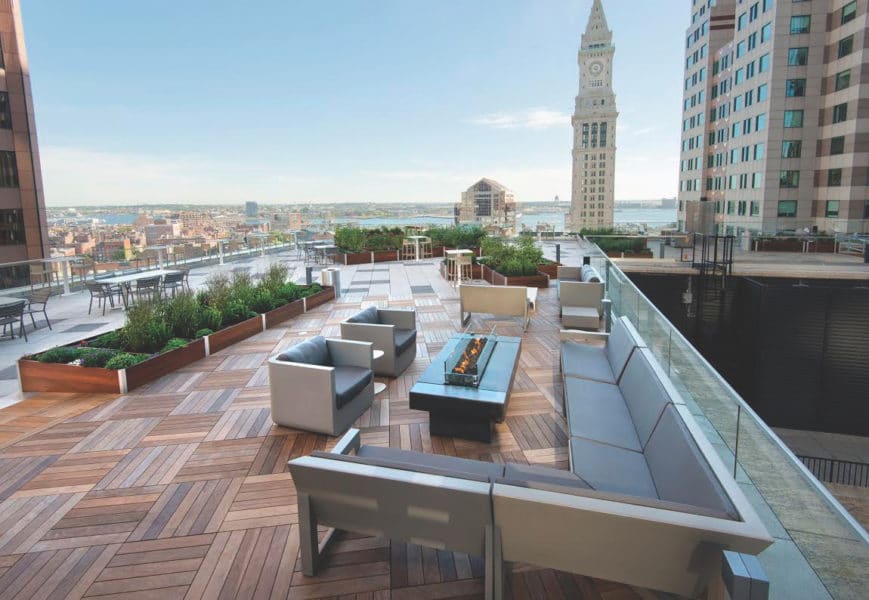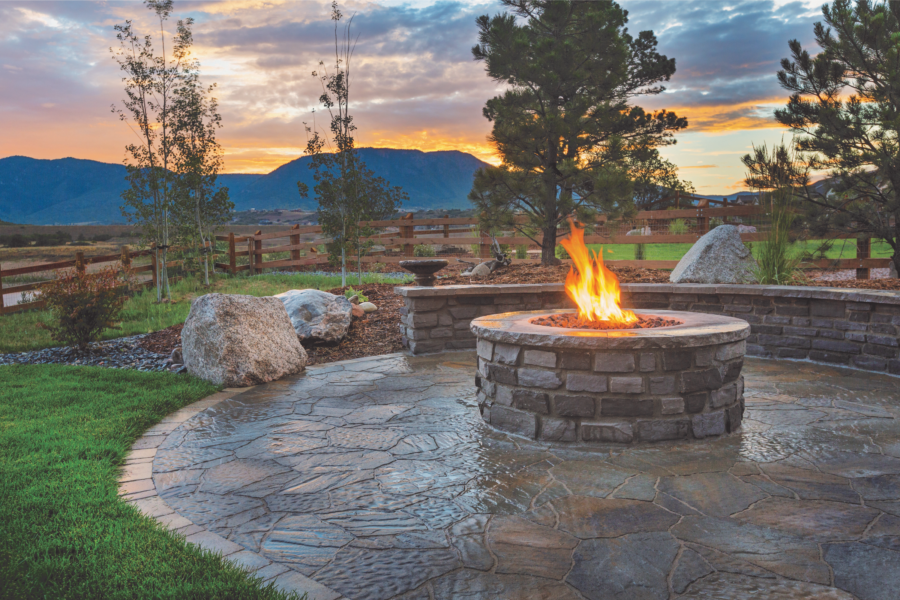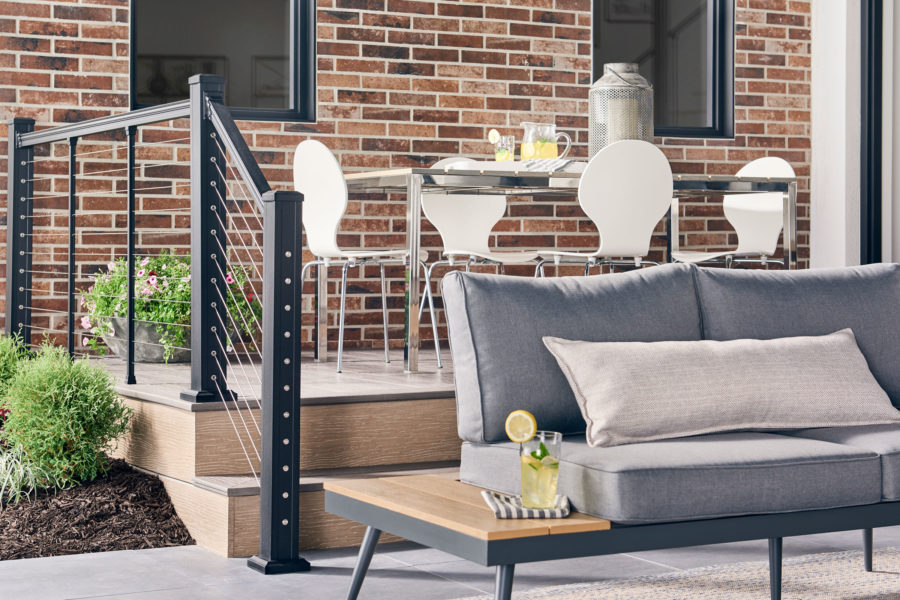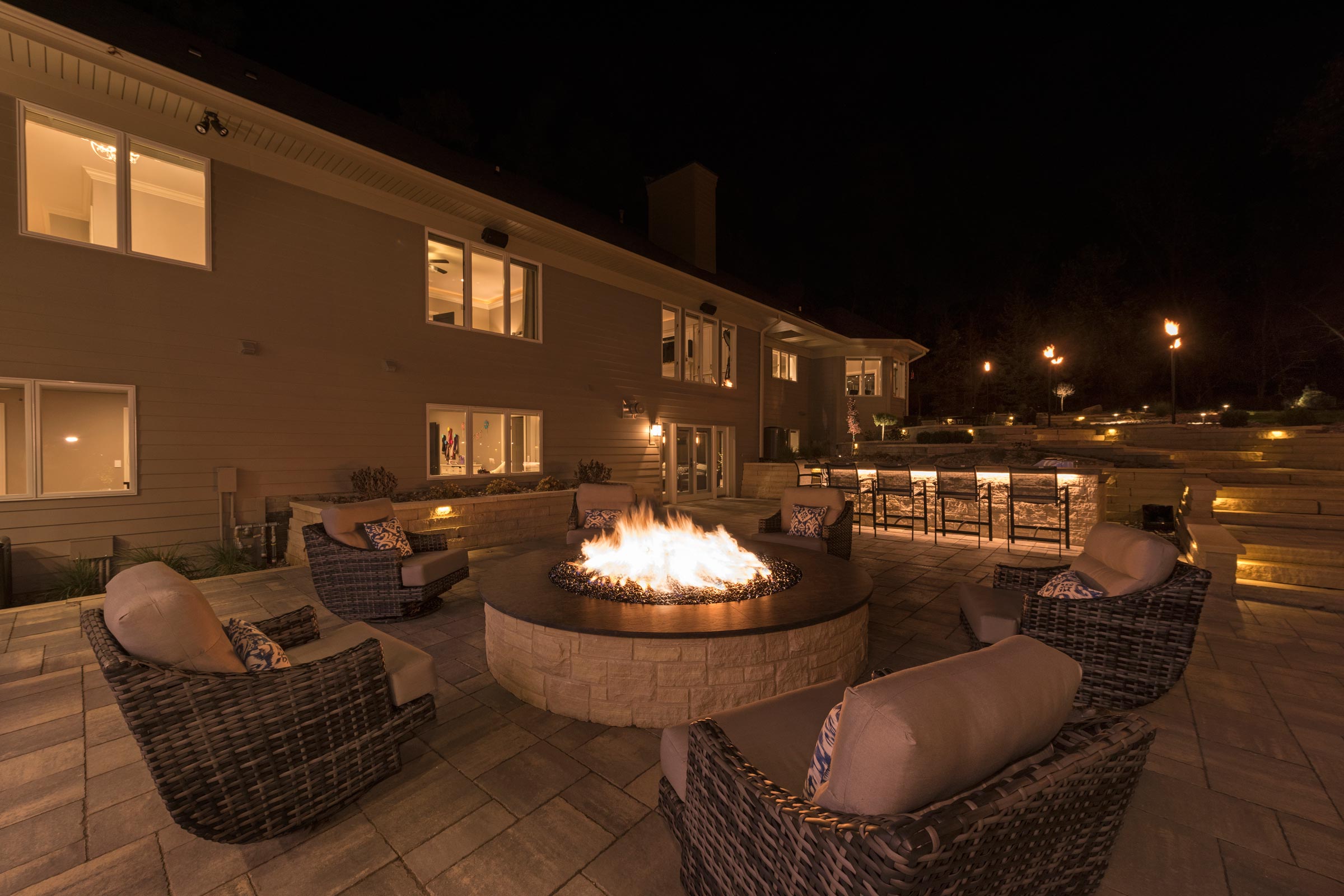Story at a glance:
- Nearly 50% of consumers add decks to outdoor spaces to improve livability.
- Composite decking is typically made up of two or more nonmetallic materials.
- Fire pits and new decks are some of the most popular features for outdoor patios.
Spending time outdoors comes with many benefits. Being in nature can reduce stress and inflammation, improve memory, and might even boost your immune system. And it can be as easy as hanging out in your backyard or on an outdoor patio.
Nearly 80% of people who have remodeled or built an outdoor patio space have an increased sense of enjoyment when they are at home, according to a 2018 Remodeling Impact Report from the National Association of Realtors (NAR).
Designing a sustainable outdoor patio is one way to get close to the outdoors without leaving home. Here are a few tips to consider when building a sustainable outdoor patio and backyard.
Use plenty of plants.

DeepStream’s planter-within-a-planter design keeps plants from overheating. Photo courtesy of Cushman & Wakefield
Plants are known to cleanse the air of harmful VOCs, and some plants can also be low-maintenance and low-cost, like English Ivy, Bamboo Palm, and Weeping Fig. Incorporating native plants in and around an outdoor patio will provide even more benefits, like promoting biodiversity and erosion prevention, there is also no need to fertilize native plants.
When it comes to using plants in outdoor patio design, features can range from incorporating a green wall to doing some traditional gardening. One simple way to add variety to an outdoor space is to use potted plants.
Choosing the right planter can elevate the aesthetic of an outdoor patio and provide an opportunity to use recycled materials. DeepStream planters use recycled materials, like recycled plastic lumber. In fact, products made with recycled plastic lumber made up 62% of DeepStream’s sales in 2017.
“One of the reasons I designed the planter system like I did is that they last,” said Tom Boyce, founder of DeepStream Designs, in a previous gb&d article. DeepStream planters are expected to last for decades because they are easy to repair and refurbish. All it takes is sanding off a little of the planks’ exterior and cleaning the aluminum to make the planters look like new.
Incorporate a fire feature.

Photo courtesy of Warming Trends
Fire pits are among the most popular additions to outdoor patios. Adding a fire pit also improves homeowners’ happiness, as consumers gave a fire feature addition a perfect 10 on the Joy Score from NAR’s 2018 Remodeling Impact Report. Gas fire features are an ideal example of an addition that is easy to install and use while providing a space to gather outdoors.
“Gas fire features create an added level of convenience when compared to wood-burning units. The fact that they can be lit with ease and cleanup is almost nonexistent (outside of picking up some wine glasses or beer bottles from sitting around the fire), is usually all that needs to be mentioned to convince a client to use a gas feature,” Bryan Small, vice president of sales at Warming Trends, previously wrote for gb&d. “When it comes to sustainability, the benefits of gas features versus wood are significant, as natural gas and propane are clean-burning and smoke-free.”
Warming Trends’ gas fire features are ideal for outdoor patio spaces because of the control they offer. The flame of Warming Trends’ products can be adjusted from a sleepy campfire to a roaring one. Their patented CROSSFIRE brass burners also have industry-leading fuel efficiency.
Fuel-efficient burners can reduce gas bills while still providing a hearty flame. Most burners on the market use lightweight steel tubing with hundreds of holes drilled in them. These burners create a low-pressure flame. The CROSSFIRE burners create significantly more pressure and turbulence at the point of ignition. This combination results in a taller, more robust flame that replicates the fullness and color of a wood fire. “The reason fuel efficiency matters to our company is because it can really matter to our customers,” said Voni Flaherty, the owner of Warming Trends, in a previous gb&d article.
Utilize recyclable materials.

Photo courtesy of Key-Link Fencing & Railing
Sustainable materials can range from aluminum fencing and railing to composite decking, and more. Stainless steel cable railing is a popular choice for outdoor spaces because it’s resistant to corrosion, easy to clean, and works well to complement many other materials.
“Cable railing continues to soar in popularity, as both buyers and renters gravitate toward the modern look of aluminum and steel,” said Key-Link Fencing & Railing’s Jeremiah Hershberger in a previous contribution to gb&d. “Additionally cable can be used with wood posts and railing thanks to adaptable stainless steel cable rail fittings. Together these systems pair well with both natural looks as well as trends like the modern farmhouse.”
Stainless steel cable is also sustainable. “Anything aluminum or steel contains recycled products…And all aluminum and steel is 100% recyclable, so both aluminum railings and the stainless steel cable could be recycled when removed,” Hershberger said.
Build with composite decking.

Different decking materials can provide advantages like durability, resistance to mold, and affordability. Photo courtesy of The AZEK Company
Nearly 50% of consumers add decks to their outdoor spaces to improve livability. The second most common reason is to upgrade worn-out surfaces, finishes, and materials.
When it comes to creating a sustainable deck for your outdoor space, composite decking offers several benefits—including sustainability. Composite decking is considered to be green because it allows for the use of post-industrial and post-consumer recycled materials on the open market. Composite decking also gives the look of hardwood without the maintenance and with added durability, and it’s typically made up of two or more nonmetallic materials. These materials are fused together to form the structure of the deck board with the most common being capped wood-plastic and capped-polymer decking.
“On the maintenance side, if you really want a wood deck to last and maintain its appearance, you need to commit to an annual maintenance program of deep cleaning, staining, and resealing the deck to prevent rot and decay,” Patrick Barnds told gb&d. Patrick works with The Azek Company, known for their outdoor living products. “That goes for pressure-treated pine, cedar, redwood, and exotic or tropical hardwoods like Ipe. With the better composite products on the market today, homeowners can forget the annual sanding, sealing, and staining. The only maintenance required to keep a composite deck looking great is occasional washing with a mild cleaner and water.”

